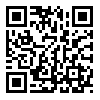BibTeX | RIS | EndNote | Medlars | ProCite | Reference Manager | RefWorks
Send citation to:
URL: http://hakim.tums.ac.ir/article-1-670-en.html
Evaluating Performance of Medical Universities in Iran during 2002 to 2007: a Technical Efficiency Study
Rashidian A1,2,3 (MD, Ph.D), Jahanmehr N * 1,3 (MSc, Ph.D student), Pourreza A1 (Ph.D), Majdzadeh SR2,4 (Ph.D), Godarzi G1 (Msc)
1 Department of Health Management and Economics, School of Public Health,
Tehran University of Medical Sciences, Tehran, Iran
2 Knowledge Utilization Research Center, Tehran University of Medical Sciences, Tehran, Iran
3 National Institute of Health Research of Iran, Tehran University of Medical Sciences, Tehran, Iran
4 Department of Epidemiology and Biostatistics, School of Public Health,
Tehran University of Medical Sciences, Tehran, Iran
Received: 10 Nov 2009, Accepted: 12 May 2010
Abstract
Introduction: The mission of the medical universities in Iran has a close connection with the national mission of the health system. This study examines the technical efficiency of healthcare resources used in medical universities.
Methods: This study estimates technical efficiency with Data Envelopment Analysis (DEA) model based on inputs, with variable returns to scale assumption. Study variables included output variables (research evaluation scores, number of graduates, crude mortality rate and the number of prescribed doses of MMR vaccine), inputs variables (budget, hospital beds, bed occupancy, number of staff), and social and environmental variables (the population covered by the university, literacy rate, per capita income, and the type of the university).
Results: The average efficiency in the universities in DEA approach is 0.812. Therefore, the capacity to increase technical efficiency of production in medical universities (compared with the most efficient universities) is about 19%. Nearly 50% of medical universities demonstrated a descending return to scale. Excess capacity of production factors was most notable in paramedical staff (4.9%). Five medical universities had the highest technical efficiency and nearly half of the universities had an efficiency of less than 0.8. The highest level of technical efficiency of medical universities in this study was observed in year 2007 (0.860) and the lowest was in 2005 (0.718).
Conclusion: Low efficiency of medical universities wastes healthcare resources. The inefficient universities with excess capacity may reduce their input capacity as one solution. The second choice is to increase the performance in education, research or healthcare.
Key words: Academic Medical Centers , Data Envelopment Analysis, Efficiency Organizational
Hakim Research Journal 2010 13(1): 58- 68.
* Corresponding Author: Department of Health Management and Economics, School of Public Health, Tehran University of Medical Sciences, Keshavarz Blvd, Tehran, Iran. Phone: +98- 914- 1849404, Fax: +98- 21- 88951397, Email : jahanmehr@razi.tums.ac.ir.
Received: 2010/11/10 | Published: 2010/04/15
| Rights and permissions | |
 |
This work is licensed under a Creative Commons Attribution-NonCommercial 4.0 International License. |



